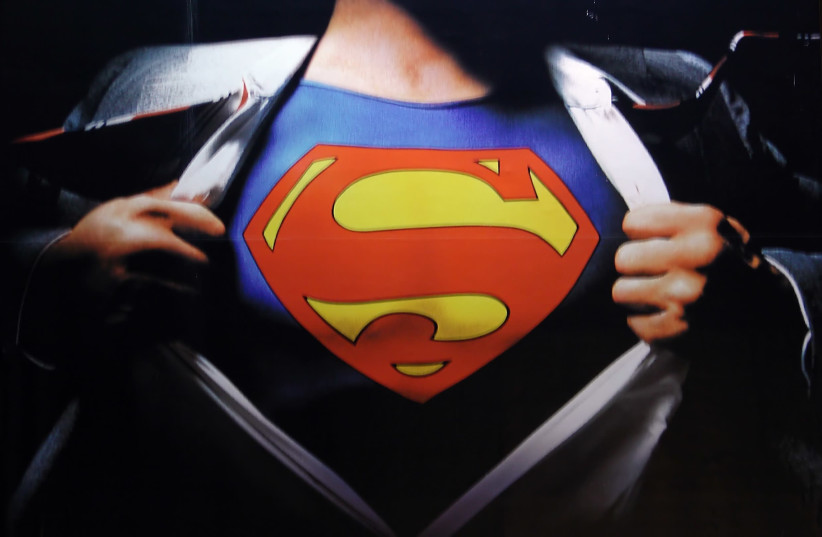If you had any doubt, this book conclusively proves the validity of the “six degrees of separation” theory.
As a matter of fact, it may even lead readers to believe the idea that we are at most six social connections away from each other to be overstated – the number may be even lower.
Here’s a small example of the interconnectivity in the book. Please pay close attention, for this excerpt is much like the book itself – fascinating but a little hard to follow.
Superman, Marilyn Monroe and escaping the Nazis – how is it all connected?
It’s 1938 and Jules and Edith Schulzbach and their daughter Hannelore are desperately trying to get out of Hitler’s Berlin and to America. They need an American sponsor, a person with enough money to guarantee to support them if necessary. Easier said than done.
Jules decides to make a trip to the US to expedite the search. Cousin Faye who lives in New York has a former neighbor, Harry Donenfeld, a somewhat sleazy but successful publisher of girlie magazines, who agrees to be the sponsor. (Don’t forget Harry.)

Jules needs to get back to Berlin to get his wife and daughter, but the Germans don’t want to allow Jews who left back into the country. At the airport in Berlin, Jules quickly understands the problem and, on the spot, invents the story that he is Clark Gable’s agent. The immigration officer permits him to enter. (Gable will be back.)
In the same period, Billie (in America, Billy) Wilder is a Jewish journalist in Berlin who started writing for filmmakers in that city. When he manages to escape to America, he starts working in Hollywood. (Wilder also will show up again.)
Our old friend Harry, Jules’s sponsor, featured Marilyn Monroe on the covers of his magazines. Harry also would publish Superman comics, cheating the Man of Steel’s creators out of millions of dollars.
Fellow former Berliner Wilder, director of The Seven-Year Itch, and Jules exchange glances at the iconic outdoor scene in that 1954 movie in which the wind from a subway grate causes Monroe’s dress to fly over her head, revealing her underwear to an adoring crowd and later to millions of moviegoers. Jules’s exclusive color film of the incident preserves it for history.
Monroe makes The Misfits with Gable, whose agent Jules pretended to be in order to return to Nazi Berlin. It will be the last movie for both stars. When the filming in the hot [Nevada] desert is over, Gable dies of a heart attack. His widow blames Marilyn for Gable’s death, claiming that America’s sex goddess was always late for shoots, keeping him waiting in the hot sun.
NOW THAT we’ve established the intense interconnectivity of the characters, let’s look a little harder at the biggest star in this six-degree galaxy – Marilyn Monroe.
Norma Jean Dougherty, who would change her name to Marilyn Monroe, by the end of 1946 had appeared on at least 33 magazine covers – many of which belonged to Harry.
“Even back then, Norma Jean was no naive waif,” write authors Helene Stapinski and Bonnie Siegler. “She had a superpower of her own and she knew it instinctively – her power of seduction while still appearing vulnerable and innocent. Norma Jean made those around her want to protect and help her, all the while seducing not just the camera, but the men, or the occasional woman, working behind it.”
Her modeling led to small parts in movies and then to starring roles by the mid-1950s.
She had become, the authors note, the symbol of America’s return to normality. “War, and all its horrors, in Europe, Japan and Korea, was finally over; America was, once again, the promised land. Marilyn was the symbol of what all those GIs had been fighting for: blond, well-fed, and full-figured.”
Her marriage to baseball legend Joe DiMaggio was the union of two of America’s brightest luminaries. The marriage, however, was doomed from the start due to the contradictory expectations they had of each other. He wanted her to give up her career and become only Mrs. Joe DiMaggio; she refused, craving the limelight and the adulation of her fans. Their marriage lasted a tumultuous nine months.
Her next man was playwright Arthur Miller. Monroe was a film star, but she was only cast as a dumb blond.
“She knew that America’s favorite playwright could create a role for her that did not involve stripping,” Stapinski and Siegler write. “The prettiest girl in class was renouncing the jock for the brainy kid. This is not to say Marilyn wasn’t attracted to Miller or felt no love for him. But Marilyn, in an era when women were not allowed to have any real desires besides home and family, was looking out for her own interests.”
At the time, Miller was married with two kids, but his wife “couldn’t argue when he fell in love with her” – she was, after all, Marilyn Monroe.
She converted to Judaism and hit it off with Miller’s parents and his children.
They would divorce, but only after he had written The Misfits.
Monroe was the highest profile person in this amazing book, but the lesser-known characters also lived exciting lives in the turmoil-filled, latter two-thirds of the 20th century. Their stories are told here with verve, grace and compassion.
Get to know them.
The writer’s memoir, Figs and Alligators: An American Immigrant’s Life in Israel in the 1970s and 1980s (Chickadee Prince Books), is available online and at bookstores.
THE AMERICAN WAY: A true story of Nazi escape, Superman, and Marilyn Monroe
By Helene Stapinski and Bonnie Siegler
Simon & Schuster
336 pages; $28.99
